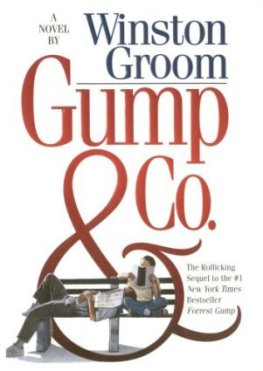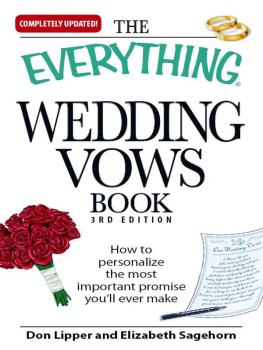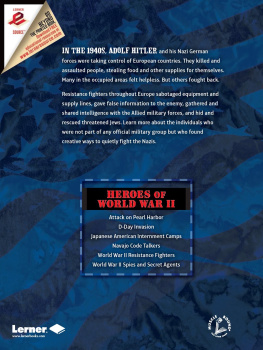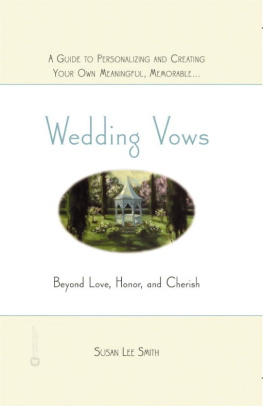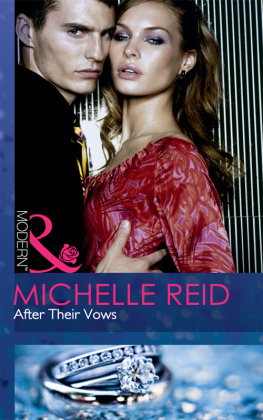Matt Ortile - The Groom Will Keep His Name: And Other Vows Ive Made About Race, Resistance, and Romance
Here you can read online Matt Ortile - The Groom Will Keep His Name: And Other Vows Ive Made About Race, Resistance, and Romance full text of the book (entire story) in english for free. Download pdf and epub, get meaning, cover and reviews about this ebook. year: 2020, publisher: PublicAffairs, genre: Non-fiction. Description of the work, (preface) as well as reviews are available. Best literature library LitArk.com created for fans of good reading and offers a wide selection of genres:
Romance novel
Science fiction
Adventure
Detective
Science
History
Home and family
Prose
Art
Politics
Computer
Non-fiction
Religion
Business
Children
Humor
Choose a favorite category and find really read worthwhile books. Enjoy immersion in the world of imagination, feel the emotions of the characters or learn something new for yourself, make an fascinating discovery.

- Book:The Groom Will Keep His Name: And Other Vows Ive Made About Race, Resistance, and Romance
- Author:
- Publisher:PublicAffairs
- Genre:
- Year:2020
- Rating:3 / 5
- Favourites:Add to favourites
- Your mark:
- 60
- 1
- 2
- 3
- 4
- 5
The Groom Will Keep His Name: And Other Vows Ive Made About Race, Resistance, and Romance: summary, description and annotation
We offer to read an annotation, description, summary or preface (depends on what the author of the book "The Groom Will Keep His Name: And Other Vows Ive Made About Race, Resistance, and Romance" wrote himself). If you haven't found the necessary information about the book — write in the comments, we will try to find it.
Matt Ortile: author's other books
Who wrote The Groom Will Keep His Name: And Other Vows Ive Made About Race, Resistance, and Romance? Find out the surname, the name of the author of the book and a list of all author's works by series.
The Groom Will Keep His Name: And Other Vows Ive Made About Race, Resistance, and Romance — read online for free the complete book (whole text) full work
Below is the text of the book, divided by pages. System saving the place of the last page read, allows you to conveniently read the book "The Groom Will Keep His Name: And Other Vows Ive Made About Race, Resistance, and Romance" online for free, without having to search again every time where you left off. Put a bookmark, and you can go to the page where you finished reading at any time.
Font size:
Interval:
Bookmark:
Matt Ortiles ardent and precocious collection sets the page aflame with its explosive mixture of passion and politics, cultural analysis and self-examination. Cruising through virtual and nocturnal circuits, Ortile riffs like a guitar savant on what it means to be a young wanderer in the city today, with astute carnality and endearing candor. The Groom Will Keep His Name is a daring brown and queer manifesto that proclaims to everyone making our way in the world: never bow to the false gods of whiteness and normalcy.
Meredith Talusan, author of Fairest
Matt Ortile writes with precision and power, and his work overflows with probing insight both inward and outward facing. Ortiles essays deftly navigate the complicated intersection of race, sex, history, family, and self. Propelled by bracing candor and impeccable skill, The Groom Will Keep His Name rushes straight to the readers eyeballs, demanding to be read.
Josh Gondelman, author of Nice Try
Matt Ortile writes this book as a kind of open invitation to readers, exploring themes of family (chosen and otherwise), relationships, race and identity with refreshing wit and vulnerability. Some of his essays might remind you of favorite conversations youve had with your sharpest, smartest friendsif youre very lucky, that is, and happen to have friends as thoughtful and brilliant as he is. Wry, funny, and poignant by turns, The Groom Will Keep His Name is an honest and moving account of a young immigrants evolving understanding of himself, as well as the two countries hes called home.
Nicole Chung, author of All You Can Ever Know
Ortiles writing is like sexsensual and vulnerable, sometimes irreverent and often soaked in layers of meaning, with the ability to make you laugh, make you cry, and lay you bare. The Groom Will Keep His Name is a sumptuous must-read for the queer millennial.
Casey McQuiston, author of Red, White & Royal Blue
Copyright 2020 by Matthew Manahan Ortile
Cover design by Pete Garceau
Cover copyright 2020 Hachette Book Group, Inc.
This is a work of creative nonfiction. While the events are true, they reflect the authors recollections of experiences over time. Additionally, some names and identifying details have been changed, and some conversations have been reconstructed.
Hachette Book Group supports the right to free expression and the value of copyright. The purpose of copyright is to encourage writers and artists to produce the creative works that enrich our culture.
The scanning, uploading, and distribution of this book without permission is a theft of the authors intellectual property. If you would like permission to use material from the book (other than for review purposes), please contact permissions@hbgusa.com. Thank you for your support of the authors rights.
Bold Type Books
116 East 16th Street, 8th Floor, New York, NY 10003
www.boldtypebooks.org
@BoldTypeBooks
First Edition: June 2020
Published by Bold Type Books, an imprint of Perseus Books, LLC, a subsidiary of Hachette Book Group, Inc. Bold Type Books is a copublishing venture of Type Media Center and Perseus Books.
The Hachette Speakers Bureau provides a wide range of authors for speaking events. To find out more, go to www.hachettespeakersbureau.com or call (866) 376-6591.
The publisher is not responsible for websites (or their content) that are not owned by the publisher.
Library of Congress Control Number: 2019057071
ISBNs: 978-1-5417-6279-4 (paperback); 978-1-5417-6280-0 (ebook)
E3-20200501-JV-NF-ORI
For my mother
thank u, next
ARIANA GRANDE
A T F ILIPINO WEDDINGS, the grooms wear white. The classical attire for men is an undyed shirt, with sleeves up to the wrists and fine embroidery down the front. Its called a barong Tagalog, literally Tagalog clothing. Most versions are cut from pia, a sheer fabric woven from pineapple leaves; silk but make it tropical. Of course, the barong is not a grooms only option. For five centuries, since our country was first colonized by empires, men in the Philippines have also worn the suit and tieor, in the current Philippine parlance, the Americana.
Over the years, Ive amassed a collection of suits in different colors, fabrics, and patterns. A suit can work anywhere, anyhow: with a turtleneck at the office, with sneakers at a bar, with a bow tie at a wedding. Its also something of a sartorial feint. A crisp blazer signals to colleagues that, yes, I can absolutely lead this meeting, even hungover. A fresh suit gives my dates the impression I do have my life together, even though I could only afford an appetizer at dinner. Suits exude power. I wear Americana as armor.
So to take off a suit feels especially intimate. Whether in my bedroom or the bedrooms of other men, disrobing leaves me vulnerable, my body exposed without the eye-guiding seams of a well-tailored garment. But, just like armor, a suits component parts remain useful as separates. I once made good use of a tie and Theos bedposts, while Gareth knew exactly what to do with a leather belt. Equally romantic are the rituals of the thing. Stephen liked to fix my pocket squares, and Adam would take my jacket, drape it over my shoulders like a cape. He admired it, he once told me, my confidence when I wore a suit, how it made me untouchable.
Barong Tagalogs, in contrast, are translucent. Pia fabric is chiffony, like organza; all the better to catch a cool breeze in the Philippines humid climate in Southeast Asia. The garment evolved from precolonial clothing, as illustrated in the Manila Manuscript, a codex that dates to about 1590. It describes how local ethnic groups appeared to their Spanish colonizers. The manuscript says social status among natives was color-coded. For example, blue was the color of the nobility, while red was reserved for royalty.
I first saw these illustrations in a Wikipedia spiral about Filipino history. Id just finished college and moved to New York, feeling untethered, particularly from my homeland. So I was ecstatic to learn about the manuscript, to see how vivid the ink and paint were still, even half a millennium later, digitized in a library archive. Here were my ancestors, catalogued like animals, but gallant nonetheless, draped in their silks and wielding their swords. How proud they looked, armed with jewelry and dripping in gold, opulent.
That was stolen from us. The Spaniards turned our various tribes, rajahnates, and kingdoms into a single colony, an appendix to their far-reaching empire. They brought their weapons, their own customs and class systems, and enforced them for over three hundred years. Unverified legends say that, under Spanish rule, men below the ruling class were forbidden from tucking their shirts into their trousers or wearing anything with pockets. This edict prevented Filipinos from stealing goods or cloaking weapons. Their Filipino clothing affirmed their status as subjects without agency.
Theres no proof of such an imperial decree. Historians have not found any law in colonial Philippines that forbade men from tucking, as it were. And contemporary photographs exist of tucked Filipino men. Jos Rizal, a writer and our national hero, is often pictured with his shirt in his trousers, wearing European clothingincluding suit and tie. This Western dress came to be known as Americana when, after war with Spain, the United States took possession of the Philippines, where white men in power wore their suits and coats, roasting themselves in the equatorial sun.
But then again, lived experiences of discrimination dont always find proof in official documents or laws, often scrubbed or never recorded. Whatever the truth, I like the reports of how Filipinos responded, allegedly decorating their barongs with bright colorsnoble blue and royal redan homage to precolonial ancestors to protest the Spanish social order. Ive come to love this idea, redeeming Filipino clothing, the barong Tagalog as resistance.
Font size:
Interval:
Bookmark:
Similar books «The Groom Will Keep His Name: And Other Vows Ive Made About Race, Resistance, and Romance»
Look at similar books to The Groom Will Keep His Name: And Other Vows Ive Made About Race, Resistance, and Romance. We have selected literature similar in name and meaning in the hope of providing readers with more options to find new, interesting, not yet read works.
Discussion, reviews of the book The Groom Will Keep His Name: And Other Vows Ive Made About Race, Resistance, and Romance and just readers' own opinions. Leave your comments, write what you think about the work, its meaning or the main characters. Specify what exactly you liked and what you didn't like, and why you think so.


